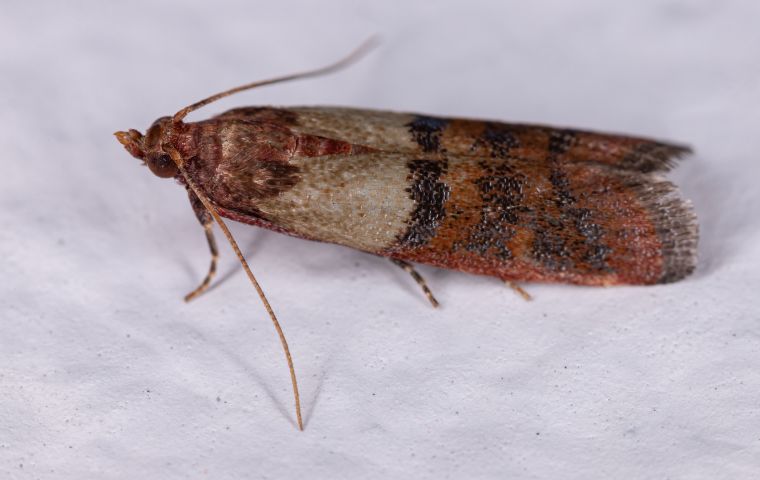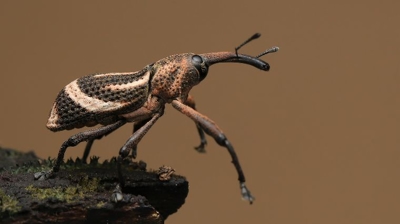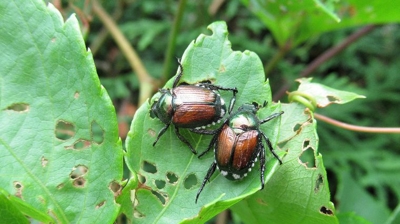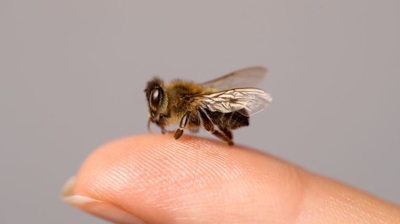
Moths
What Are Moths?
Moths are a diverse group of insects belonging to the order Lepidoptera, which also includes butterflies. They are known for their often muted coloration, distinctive wing patterns, and nocturnal behavior. Here is an overview of moths:
- Taxonomy and Classification: Moths are classified within the order Lepidoptera, which is further divided into several families. There are approximately 160,000 known species of moths worldwide, making them one of the largest groups of insects, far outnumbering butterflies.
- Physical Characteristics: Moths typically have stout, furry bodies and long, delicate antennae. Their wings are covered in tiny scales, which give them their name, "Lepidoptera" (scale-winged). Moth species exhibit a wide range of sizes, colors, and patterns, but many are well-camouflaged to blend in with their surroundings.
- Life Cycle: Like butterflies, moths undergo a complete metamorphic life cycle, consisting of four stages: egg, larva (caterpillar), pupa (chrysalis or cocoon), and adult. Moth larvae, or caterpillars, often have chewing mouthparts and are herbivorous, feeding on a variety of plant materials.
- Behavior: Most moths are nocturnal, meaning they are active at night. This behavior helps them avoid predators and take advantage of the cover of darkness. However, there are also diurnal (daytime-active) moth species.
- Ecology: Moths play important roles in ecosystems. They serve as pollinators for some plant species and are a vital food source for many animals, including birds, bats, and other insects. Some moth caterpillars are considered pests because they feed on agricultural crops or stored food products.
- Economic Significance: Moths have economic significance both as pests and beneficial organisms. While some moth species can damage crops and textiles, others are used in silk production (e.g., silkworm moths). Additionally, the study of moths, known as lepidopterology, contributes to our understanding of insect biodiversity and ecology.
- Diversity: Moths exhibit an incredible diversity of forms and behaviors. This diversity is evident in their wings, which can range from plain and cryptic to flamboyant and colorful. Some moths are known for their impressive long-distance migrations, while others are adapted to specific habitats or food sources.
Moths are a fascinating and diverse group of insects with a wide range of species and behaviors. Their ecological roles, economic importance, and unique life cycles make them subjects of scientific study and conservation efforts around the world.
Are Moths Harmful?
Moths can be harmful in several ways, depending on the species and the environment. Their impact can range from economic damage to health risks. Here are some of the ways in which moths can be considered harmful:
Damage to Fabrics and Stored Goods
Certain species of moths, such as the clothes moth (Tineola bisselliella) and the case-bearing clothes moth (Tinea pellionella), can cause significant damage to fabrics. Their larvae feed on natural fibers like wool, silk, fur, and even certain blends of synthetic and natural fibers, leading to holes in clothing, carpets, and upholstery.
Similarly, pantry moths (such as the Indian meal moth, Plodia interpunctella) infest stored food products, contaminating grains, flour, nuts, dried fruit, and pet food. Their larvae create silk webbing in food, leading to spoilage and waste.
Health and Hygiene Concerns
While moths do not directly bite or sting humans, they can still pose indirect health risks:
- Allergens and Respiratory Issues: Moth scales, shed from their wings, and the debris from larvae can become airborne and trigger allergic reactions, asthma, or respiratory irritation.
- Contaminated Food: Pantry moth larvae can introduce webbing, feces, and cast skins into food, making it unfit for consumption.
- Toxic Caterpillars: Some moth larvae, such as those of the Megalopyge opercularis (puss moth caterpillar) and Lonomia obliqua (South American giant silkworm moth), have venomous spines that can cause painful stings and even severe medical reactions.
Learn more: Do Moths Bite?
Structural Damage
Some moth larvae burrow into wood or other materials, potentially weakening structures. While they are less destructive than termites, certain species can contribute to deterioration, especially in stored wood or natural fiber insulation.
Agricultural Pests
Many moth species, particularly their caterpillars, can be serious agricultural pests. Examples include:
- Corn earworm (Helicoverpa zea): Feeds on corn, tomatoes, and cotton.
- Gypsy moth (Lymantria dispar): Defoliates trees, leading to weakened forests.
- Cabbage looper (Trichoplusia ni): Affects crops like cabbage, lettuce, and other leafy greens.
- Armyworms (Spodoptera spp.): Cause significant crop losses in grains, rice, and grasses.
Moth larvae can devastate crops by consuming leaves, stems, or fruit, leading to reduced yields and economic losses for farmers.
Environmental Impact
Invasive moth species, such as the spongy moth (formerly known as the gypsy moth) and the winter moth (Operophtera brumata), can disrupt ecosystems by defoliating trees, affecting biodiversity, and increasing susceptibility to diseases and pests.
Nuisance Factor
Moths can become a nuisance when they gather in large numbers around lights at night, enter homes, or infest stored clothing and food. Their fluttering behavior can be bothersome, especially when they unexpectedly emerge from storage areas.
While moths play a vital role in ecosystems as pollinators and as a food source for other animals, certain species can be harmful due to their ability to damage textiles, contaminate food, destroy crops, or trigger allergic reactions. Effective pest management strategies, such as proper storage, cleaning, and biological controls, can help mitigate their negative impact.
Learn more: Natural Moth Repellents
Types of Moths
Moths exhibit an incredibly diverse array of species, with a vast range of shapes, sizes, colors, and behaviors. Here are some of the major types of moths and their characteristics:
- Luna Moths: Luna moths are large, pale-green moths known for their striking appearance and long tails on their hindwings. They are native to North America and are often associated with moonlight.
- Hummingbird Hawk Moths: These moths are agile and resemble hummingbirds in flight. They have long proboscises for feeding on nectar while hovering near flowers.
- Atlas Moths: Atlas moths are some of the largest moths in the world, with wingspans that can exceed 10 inches. They are known for their dramatic size and unique wing patterns.
- Rosy Maple Moths: Rosy maple moths are small, brightly colored moths with pink and yellow hues. They are often found near maple trees.
- Gypsy Moths: Gypsy moths are considered invasive pests. The females are flightless, and their caterpillars are known for defoliating trees.
- Death's Head Hawk Moths: These moths are recognized by the skull-like patterns on their thorax, hence the name. They have a distinctive appearance and are known for their ability to emit a squeaking sound.
- Cecropia Moths: Cecropia moths are North America's largest native moth species, with impressive wingspans and striking coloration.
- Tiger Moths: Tiger moths are a diverse group known for their vibrant colors and patterns. They include the garden tiger moth and many other species
- Poodle Moths: Poodle moths are not well-documented and are known from a single photograph, which has generated some controversy in the entomological community. Their existence is debated.
- Sphinx Moths: Sphinx moths are often referred to as hawk moths or hummingbird moths due to their rapid flight and hovering behavior while feeding on nectar.
- Giant Leopard Moths: These moths have striking black and white spots on their wings, resembling the coat of a leopard.
- American Dagger Moths: These moths are characterized by their dagger-shaped markings on their wings. Their caterpillars have tufts of hairs and can cause skin irritation
- Indian Meal Moths: Indian meal moths are common pantry pests that infest stored grains and food products. They have distinctive wing markings.
- Silkworm Moths: Silkworm moths are domesticated for silk production. They have a short lifespan and do not feed as adults.
- Hickory Horned Devil Moths: The caterpillar of this moth is one of the largest and most distinctive in North America, with long, spiky "horns."
- Miller Moths: Miller moths are nocturnal moths that can be a nuisance when they swarm around outdoor lights.
- Tarantula Moths: These moths have bright orange and black coloration and are known for their mimicry of tarantula spiders.
- Grain Moths: Grain moths are common pantry pests that infest stored grains, cereals, and other food products.
- Asp Moths: The caterpillars of asp moths, also known as puss caterpillars, have stinging spines and can deliver painful venomous stings if touched.
Each of these moths is unique in its appearance, behavior, and ecological role.
Moth Identification
Moths display a wide range of appearances, but they share some common characteristics that distinguish them from other insects. Here is what moths generally look like:
- Body: Moths have a distinctive insect body structure characterized by three main parts: the head, thorax, and abdomen. Their bodies are typically stout and covered in fine, often fuzzy, hair-like structures called setae. The body size and shape can vary significantly among different moth species.
- Wings: Moths have two pairs of wings, as is typical for insects. Their wings are membranous and are covered in tiny, overlapping scales, which are the source of the name "Lepidoptera," meaning "scale-winged." The scales give the wings their coloration and can create intricate patterns. The size and shape of the wings can vary widely, with some moths having broad wings, while others have narrower or elongated ones.
- Coloration: Moth coloration varies greatly among species. While some moths are drab and cryptic, with earthy tones that help them blend into their environments, others are brightly colored or patterned. The colors can range from muted browns and grays to vibrant reds, yellows, and even iridescent hues. Many moths have patterns such as spots, stripes, or intricate designs on their wings, which can serve various functions, including camouflage and warning coloration.
- Antennae: Moths have long and often feathery or filamentous antennae, which are used for sensing chemicals, pheromones, and environmental cues. The shape and size of antennae can be important for species identification and play a role in the moth's behavior, such as locating mates or detecting food sources.
- Proboscis: Most adult moths have a proboscis, a long, tubular mouthpart that allows them to feed on nectar from flowers. The length and structure of the proboscis can vary among species, with some being very long to access deep floral tubes, while others are shorter.
- Legs: Moths have six jointed legs attached to their thorax. These legs vary in size and shape, depending on the moth's lifestyle and habitat. Some moths have well-developed legs for walking or gripping surfaces, while others have reduced leg structures.
- Eyes: Moths typically have large compound eyes, which provide them with good vision, especially in low-light conditions at night.
- Sexual Dimorphism: In many moth species, males and females can have differences in size, wing shape, and sometimes coloration. These differences can be related to their roles in reproduction and may involve attracting mates.
- Caterpillars: Moth larvae, known as caterpillars, have their own unique appearance. They are usually segmented and have a soft, cylindrical body covered in tiny hairs. Their coloration and markings can vary greatly between species, and some caterpillars have distinctive features like horns or spines for defense.
There is immense diversity among moths, with over 160,000 known species, so the appearance of moths can vary significantly. The descriptions above provide a general overview of their characteristics, but specific details can differ from one species to another. Moths have adapted to a wide range of habitats and lifestyles, leading to the incredible variety of appearances observed in this insect group.
Learn more: What Do Moth Eggs Look Like?
Moth Habitats
Moths can be found in a variety of habitats around your home, depending on the time of day and the specific species you're interested in observing. Here are some common places to find moths around your home:
- Outdoor Lighting: Moths are famously attracted to outdoor lights at night. If you have porch lights, streetlights, or any outdoor lighting fixtures, you are likely to find moths fluttering around them. This is a great opportunity to observe a variety of moth species.
- Gardens and Flowerbeds: Moths are often attracted to the nectar of flowering plants. Planting a variety of flowers in your garden or maintaining a flowerbed can attract moths, especially at dusk and dawn when they are active.
- Trees and Shrubs: Many moth species lay their eggs on the leaves of trees and shrubs. You can find moth caterpillars, which are the larval stage of moths, munching on leaves and branches. Look carefully for signs of caterpillar feeding damage.
- Wooded Areas: If you have wooded areas near your home, these can be excellent places to find moths, especially during their nocturnal flights. Moths often rest on tree trunks or leaves during the day, making them easier to spot.
- Vegetable and Fruit Gardens: Some moth species, such as the Tomato Hornworm Moth, can be found in vegetable and fruit gardens where their caterpillars feed on crops.
- Under Porch Eaves and Overhangs: Moths might seek shelter during the day under porch eaves, overhangs, or other protected areas around your home.
- Compost Piles: Moths can be attracted to compost piles, where they may lay their eggs or feed on decaying organic matter.
- Near Water Sources: Some moths are associated with water sources, such as ponds or streams, especially during their breeding and larval stages.
- Window Screens: Moths may be attracted to the light inside your home at night and can often be found resting on window screens or walls near light sources.
Remember that moths are most active during the night, so nighttime is generally the best time to find moths.
Moth Diet
The dietary preferences of moths can vary widely among species, and their feeding habits are often closely tied to their life stage. Here is a comprehensive overview of what moths eat at different stages of their life cycle:
- Moth Eggs: Moth eggs themselves do not eat. They are typically laid on or near the food source that will sustain the caterpillars once they hatch.
- Moth Larvae (Caterpillars): Caterpillars are the feeding and growth stage of the moth life cycle, and they have voracious appetites. The majority of moth caterpillars are herbivores, feeding on plant materials such as leaves, stems, flowers, and fruit. Different species of moths have specific host plants they prefer. For example, the Tomato Hornworm caterpillar feeds on tomato and tobacco plants, while the Monarch butterfly caterpillar feeds exclusively on milkweed. Some caterpillar species feed on decaying plant matter, fungi, or detritus. They play important roles in breaking down organic material and recycling nutrients in ecosystems. A few moth caterpillar species are carnivorous and feed on other insects or their eggs. These caterpillars are less common but have adapted to specific niches.
- Pupa (Chrysalis or Cocoon): During the pupal stage, moths do not eat. They are in a non-feeding, resting state, and their metabolic activity is significantly reduced. They rely on the energy and nutrients stored from their larval stage to complete their transformation into adults.
- Adult Moths: Adult moths primarily feed on nectar from flowers, although their feeding habits can vary based on their species, size, and the availability of nectar sources. The proboscis, a long, tubular mouthpart, allows adult moths to sip nectar from the blooms of various flowers. Moths are important pollinators for many plant species, and their feeding behavior helps transfer pollen from one flower to another, facilitating plant reproduction. Some adult moths may also feed on other sugary substances, such as tree sap or rotting fruit.
There is significant diversity in the dietary habits of moths, with over 160,000 known species, each adapted to different ecological niches. The specific food sources and feeding behaviors of moths are influenced by factors such as their evolutionary history, geographic range, and the availability of suitable food plants in their environment.
Learn more: What Do Moths Eat?
Moth Life Cycle
The life cycle of moths, like that of all insects in the order Lepidoptera, is characterized by a process called complete metamorphosis, which consists of four distinct stages: egg, larva (caterpillar), pupa (chrysalis or cocoon), and adult. The life cycle of moths can vary in duration and details depending on the species, environmental conditions, and geographic location, but the general process remains the same. Here is an overview of the life cycle of moths:
- Egg Stage: The life cycle begins when a female moth lays her eggs. The number of eggs laid can vary significantly among species, with some laying just a few eggs, while others lay hundreds. The eggs are usually deposited on or near the food source that the moth caterpillars will consume when they hatch. This can include leaves, stems, or other plant materials. The duration of the egg stage varies depending on factors like temperature and humidity, but it typically lasts from a few days to a few weeks.
- Larva Stage (Caterpillar): When the eggs hatch, they give rise to caterpillars, which are the feeding and growth stage of the moth life cycle. Caterpillars have a soft, cylindrical body with numerous segments. They are typically voracious herbivores, feeding on the plant material specified by their species. Caterpillars go through multiple instar stages, shedding their outer skin (molting) as they grow. During each instar, they consume more food and grow larger. The duration of the larval stage can vary widely among species, lasting from a few weeks to several months. It is during this stage that most of the moth's growth occurs.
- Pupa Stage (Chrysalis or Cocoon): When the caterpillar has reached its full size and completed its final instar, it undergoes a transformation into a pupa. The pupa is a non-feeding, resting stage. Some moth species create a protective structure for their pupa, such as a cocoon made of silk (e.g., silk moths) or a hardened chrysalis (e.g., swallowtail butterflies). Inside the pupa, the caterpillar undergoes a remarkable transformation known as metamorphosis, during which it develops into an adult moth. This process involves the reorganization of tissues, the development of wings, and the transformation of the caterpillar's body into the adult form. The duration of the pupal stage varies greatly among species and can range from a few weeks to several months.
- Adult Stage: Once the transformation inside the pupa is complete, the adult moth emerges. The timing of emergence is often synchronized with environmental cues, such as temperature, humidity, and photoperiod (day length). The adult moth has fully developed wings and reproductive organs. Its primary goal is to find a mate and reproduce. Adult moths typically have a relatively short lifespan, which can vary from a few days to several weeks, depending on the species. During this stage, adult moths are primarily focused on reproduction, and they often play a role in pollinating flowers while searching for mates.
The life cycle of moths is a remarkable process that allows them to adapt to various environmental conditions and ecological niches. It also includes distinct stages that serve different purposes in the moth's life, from growth and feeding as a caterpillar to reproduction as an adult.

Hear From Our Happy Customers
-
"Great Communication"
Tech was on time, communication was great, and he accommodated my needs.
- Alonzo W. -
"Exceeds Expectations"
I can’t say enough positive things about this company... The tech that came out, Jarvis went above and beyond my expectations. Thank you guys, I will continue using your services.
- Jake M. -
"Fantastic & Patient"
Jarvis was fantastic and patient. He answered my questions with an in-depth explanation and addressed all of my areas of concern. Would love for him to be my assigned tech going forward. Well done!
- Yonnette M. -
"Wonderful Service"
Wonderful service. Jarvis is great. Took care of everything I needed. Thank you!
- Henry P. -
"Professional & Considerate"
I’m pleased with Miche services. Jarvis came today. Professional and considerate. Thank you!
- Judy B. -
"Very Knowledgeable"
The tech that arrived was courteous, professional, and very knowledgeable. He was Great.
- Uerial I.



